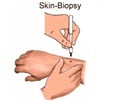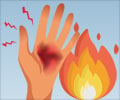About
One of the most painful injuries that one can ever experience is a burn injury. When a burn occurs to the skin, nerve endings are damaged causing the intense feelings of pain.
Burn injuries, have reached epidemic proportions in recent years and are considered a health care problem that is more serious than the polio epidemic when it was at its peak. It has only been in the past several years that the medical profession has begun to recognize and understand the problems associated with burns. Burn accident statistics show that at least 50% of all burn accidents can be prevented. Across the world approximately 4.8 million burn injuries are reported per year. Between 18,000 and 22,000 patients with burns die, and approximately one million will sustain substantial or permanent disabilities resulting from their burn injury.
The kitchen is the most frequent area within the home where burn injuries occur for children newborn to four years in age. The second most frequent area in which burns occur is in the bathroom.
Partial Thickness Burns
In partial thickness burns, there may be redness due to capillary dilatation but the underlying germinal layer is intact.
Full Thickness Burns
In full thickness burns, the skin is completely destroyed.
| T | TPartial Thickness | TFull Thickness |
| Depth | Superficial | Deep |
| Sensation | Present | Absent |
| Healing | Complete | Scar And Contractute |
What are the Depth of Injuries?
First degree burns are superficial injuries that involve only the epidermis or outer layer of skin. They are the most common and the most minor of all burns. The skin is reddened and extremely painful. The burn will heal on its own without scarring within two to five days. There may be peeling of the skin and some temporary discoloration.
Second degree burns occur when the first layer of skin is burned through and the second layer, the dermal layer, is damaged but the burn does not pass through to underlying tissues. The skin appears moist and there will be deep intense pain, reddening, blisters and a mottled appearance to the skin. Second degree burns are considered minor if they involve less than 15 percent of the body surface in adults and less than 10 percent in children. When treated with reasonable care, second degree burns will heal themselves and produce very little scarring. Healing is usually complete within three weeks.
Third degree burns involve all the layers of the skin. They are referred to as full thickness burns and are the most serious of all burns. These are usually charred black and include areas that are dry and white. While a third-degree burn may be very painful, some patients feel little or no pain because the nerve endings have been destroyed. This type of burn may require skin grafting. As third degree burns heal, dense scars form.








